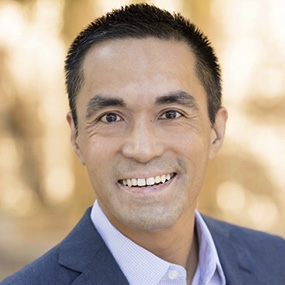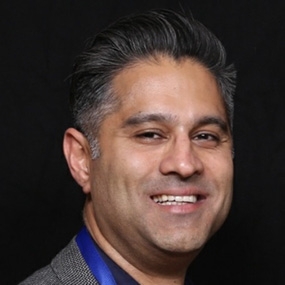
Professor and Senior Vice Chair, Department of Anesthesiology, Perioperative and Pain Medicine, Stanford University School of Medicine; Chief of Anesthesiology, Perioperative and Pain Medicine Veterans Affairs, Palo Alto Health Care System

Consultant Anaesthetist, Department of Anaesthesia, Guy’s and St Thomas’ NHS Foundation Trust, and Cleveland Clinic, London
According to Statista, the UK has approximately 62 million social-media users. While YouTube is considered the most well known platform, actual use puts WhatsApp on top, followed by Facebook, Instagram and Twitter (now known as ‘X’). For people born in the late 1990s (‘Gen Z’), the use of smartphones and constant internet connectivity have always been part of their lives. The video-based app TikTok is extremely popular with Gen Z and is a major competitor to YouTube and Meta’s platforms in the short video market.
How do these data impact upon anaesthesia?
First, given the penetration of social media into society and the wide variety of platforms and apps available, anaesthetists at all levels of training and career are probably using social media in some form. The Cambridge dictionary defines social media as ‘websites and computer programs that allow people to communicate and share information on the internet using a computer or cell phone’. This definition is broad, which is why both messaging applications and social networking platforms are listed in surveys of social media. For this article, we will focus on public-facing social-media platforms and apps rather than messaging apps (eg, WhatsApp).
Second, as the world has evolved to embrace social-media outlets as sources of news, education and entertainment, there are many good reasons for anaesthetists and anaesthesia organisations to deliberately engage in social media. We have categorised some of our reasons as: global connectivity, lifelong learning, and disseminating medical information.
Global connectivity
The internet transcends time zones, and social-media platforms offer a form of asynchronous digital communication facilitating interactions between individuals with similar interests anywhere in the world. X (formerly Twitter), a microblogging platform that caps posts at 280 characters, has been utilised for almost realtime global conversations on topics of interest to anaesthetists. These interactions represent a modern form of networking that can develop into collaborations and mentorship. An attractive feature of X is that ‘hashtags’ (key words or phrases preceded by ’#’), when included in the text of a tweet, can be used to actively link conversations and search for other tweets on a common topic such as #regionalanaesthesia or #pedsanes. Hashtags are used on other social-media platforms as well for this purpose, with the exception of Threads which is a new microblogging platform by Meta. Although the controversial sale of Twitter and rebranding to X have generated concern among the user community, so far there is no obvious replacement platform that can offer the same functionality.
Lifelong learning
The career of an anaesthetist can last for three or more decades, and it is impossible to keep up with the volume of articles published in the fields of anaesthesia and pain medicine annually. Social-media platforms can provide access to curated content relevant to any practice. For example, as anaesthetists who specialise in regional anaesthesia, we follow other regional anaesthesia specialists on X and other platforms, as well as in organisations and journals relevant to this subspecialty. In our opinion, one of the most powerful applications of social media for education is the posting of educational content from conferences located anywhere in the world. By ‘live tweeting’, attendees share learning points from their sessions on their social-media platforms and mark them with the congress hashtag. Thus, when attending a particular congress, it is possible to keep updated on multiple simultaneous sessions. Additionally, there may be many times in our careers when we will not be able to attend conferences in person, and members of a social-media learning community can continue to keep each other updated on relevant content. Anaesthetists can also find educational posts and videos on other platforms such as Instagram, TikTok, Facebook and YouTube, among others.
Disseminating medical information
As researchers, we aim to answer questions that will affect the care of patients, but an article that no one reads will never have a chance of impacting upon care. Social media are an effective means of disseminating new research findings, and highly tweeted articles are 11 times more likely to be cited in future publications. However, our audience on social media is not limited to just our colleagues in anaesthesia and healthcare; it is increasingly common for the general public to seek health information from the internet, where misinformation abounds. Physicians have an opportunity and obligation to be where the people are – using social media to provide reliable evidence-based medical information. Who is better qualified to post for public consumption on topics covering anaesthesia, critical care and pain than an anaesthetist?
Starting on social media can be intimidating, but starting an account to observe is not a huge commitment. Remember, observation is still a key part of the scientific method. For those who grew up with social media and are now making the pivot to professional use, remember these 10 rules for doctors on social media and always protect patient confidentiality. Given the variety of social-media platforms available, there is at least one that can suit any individual’s interests.




